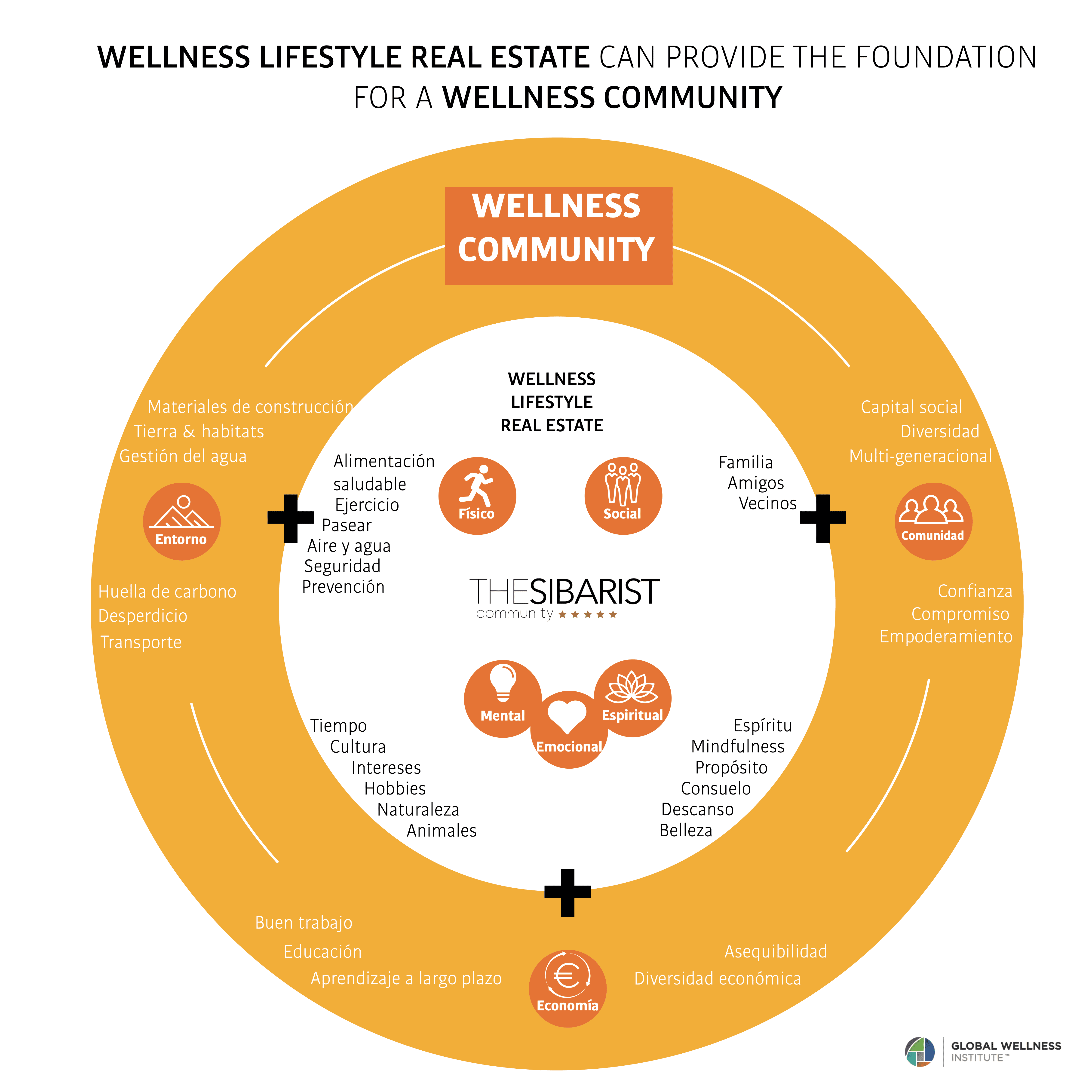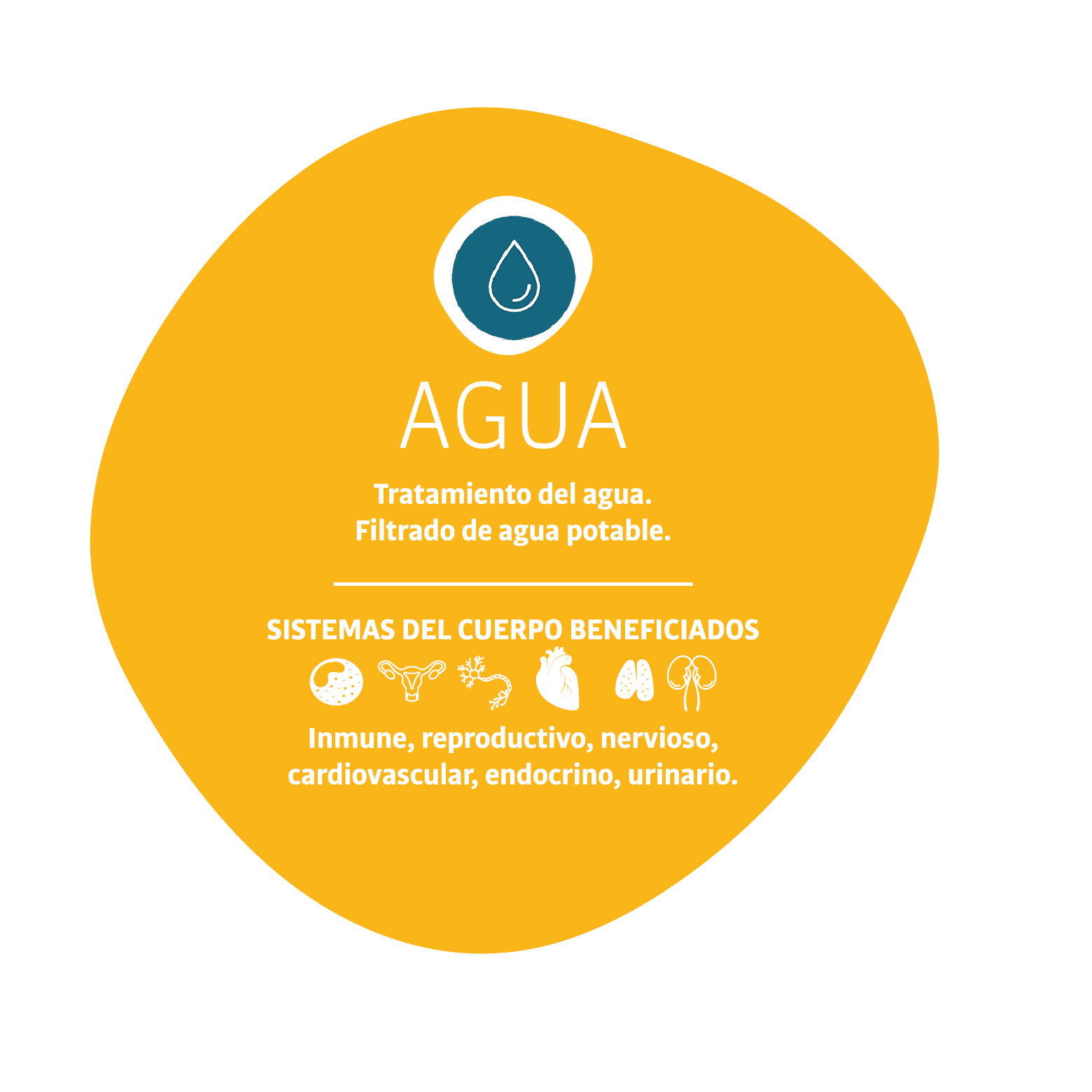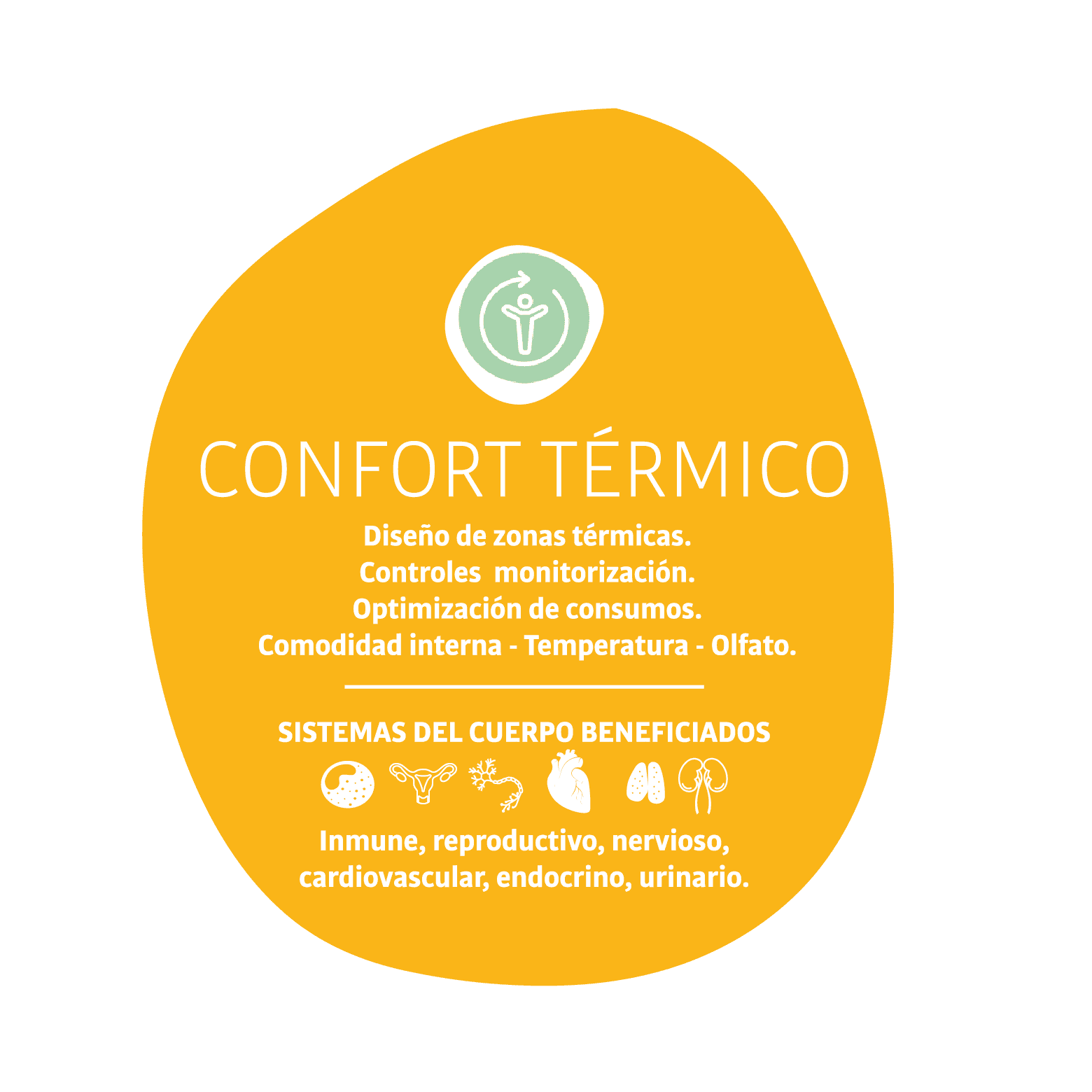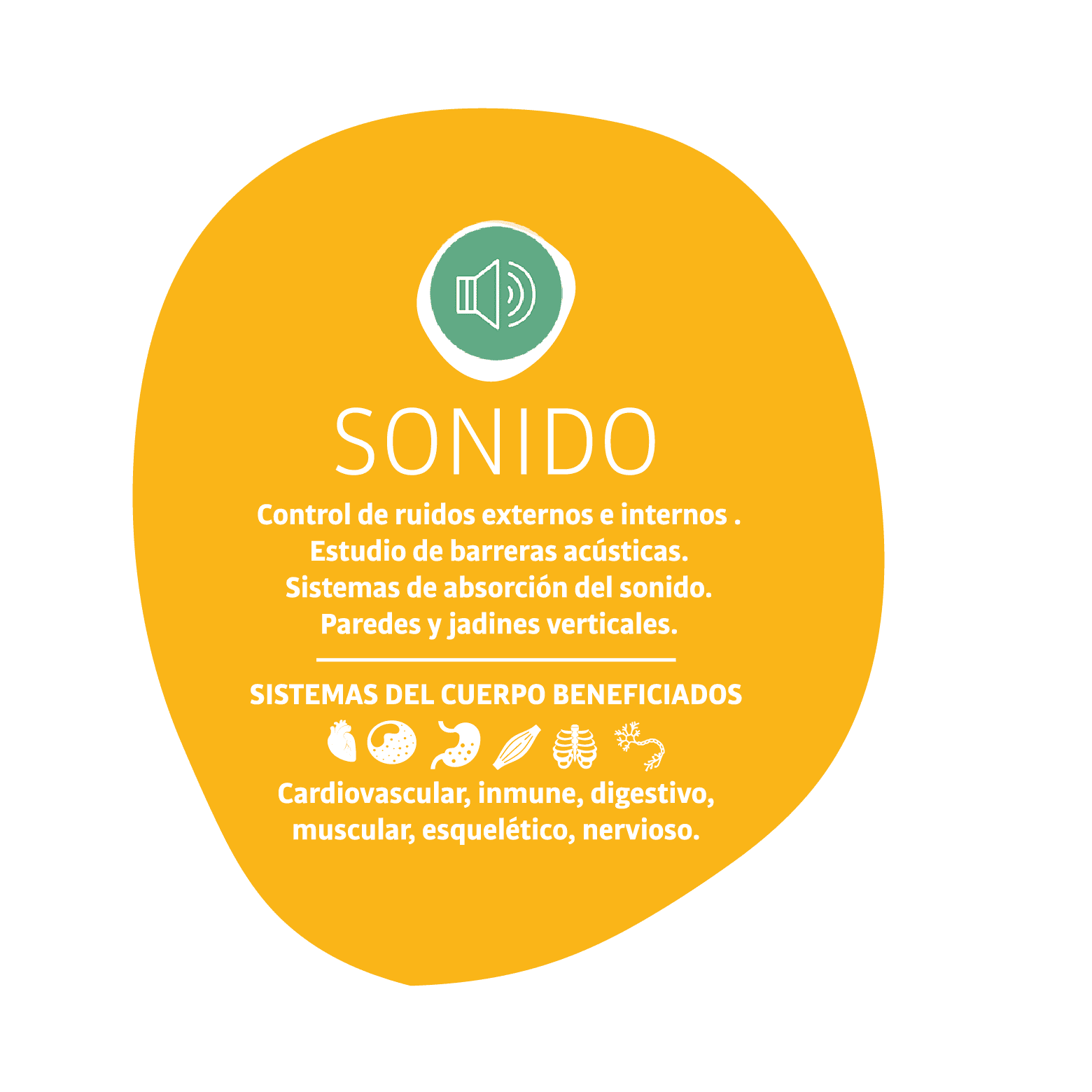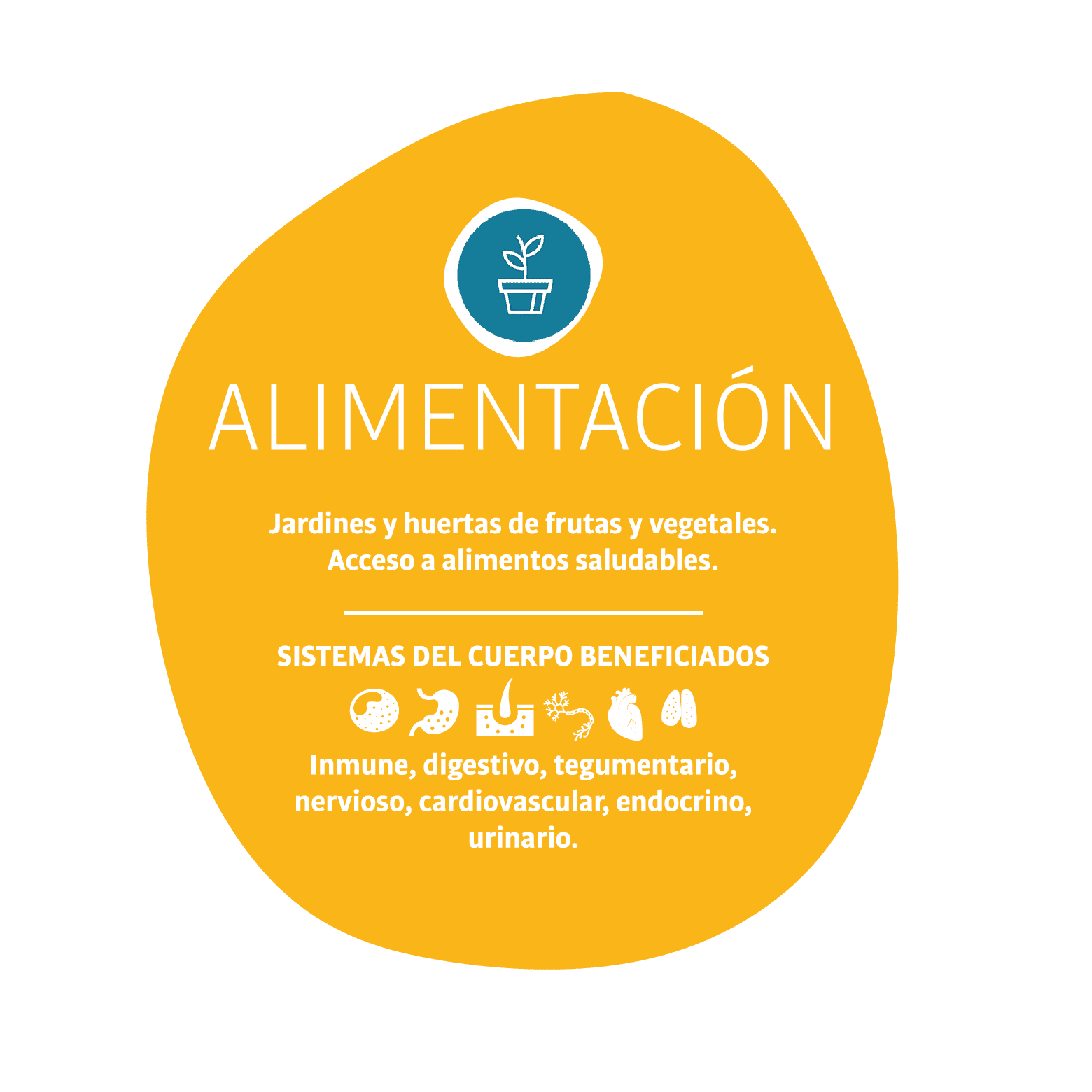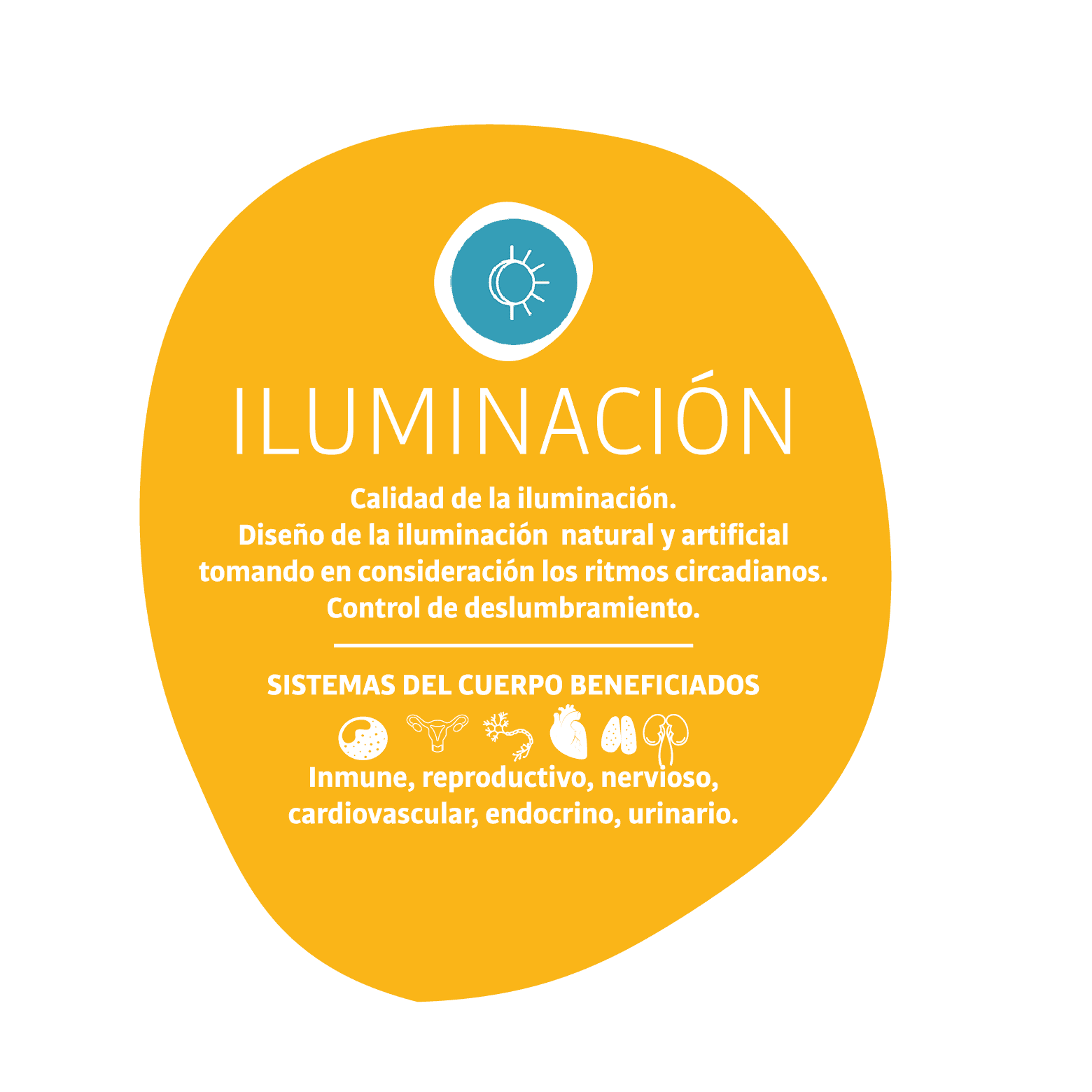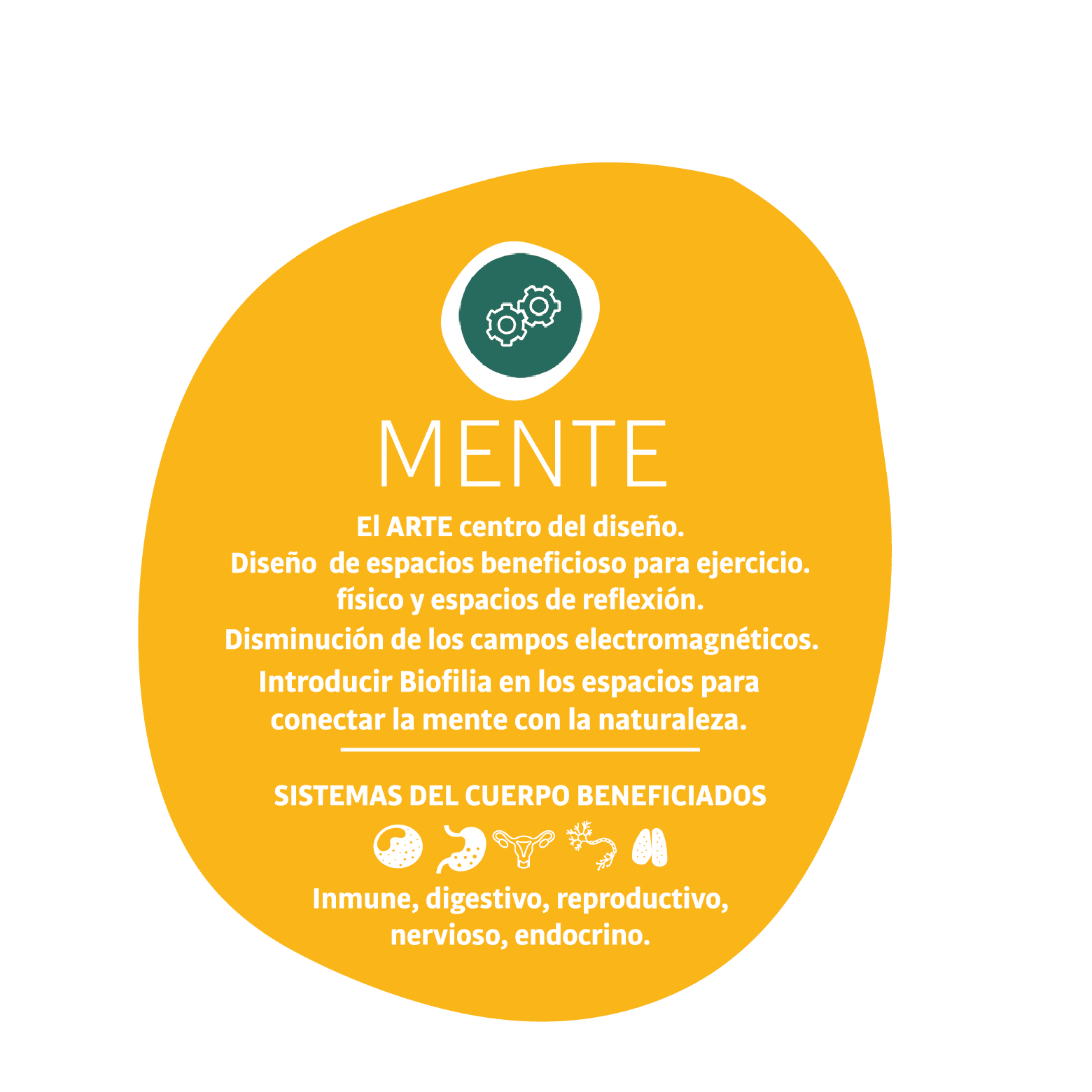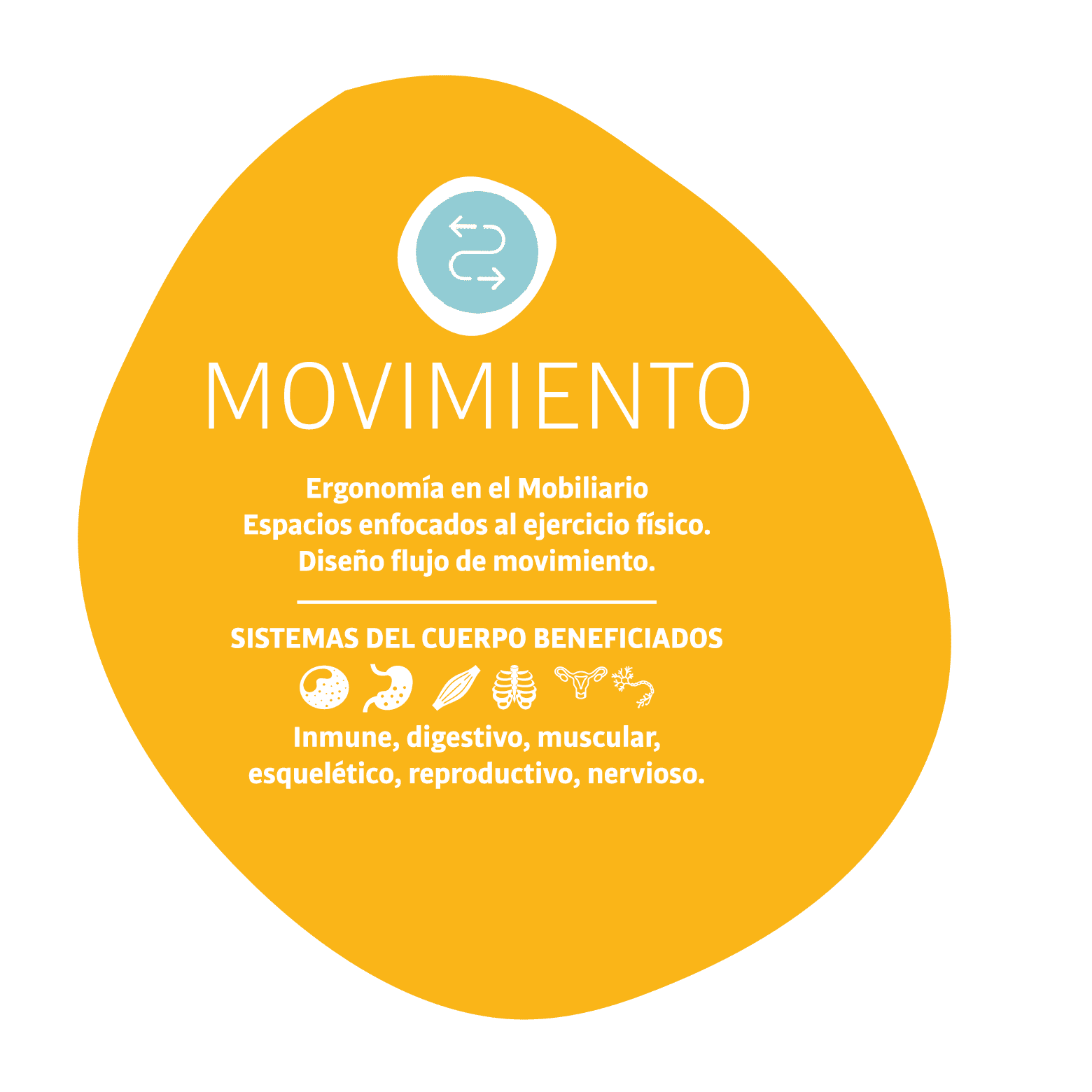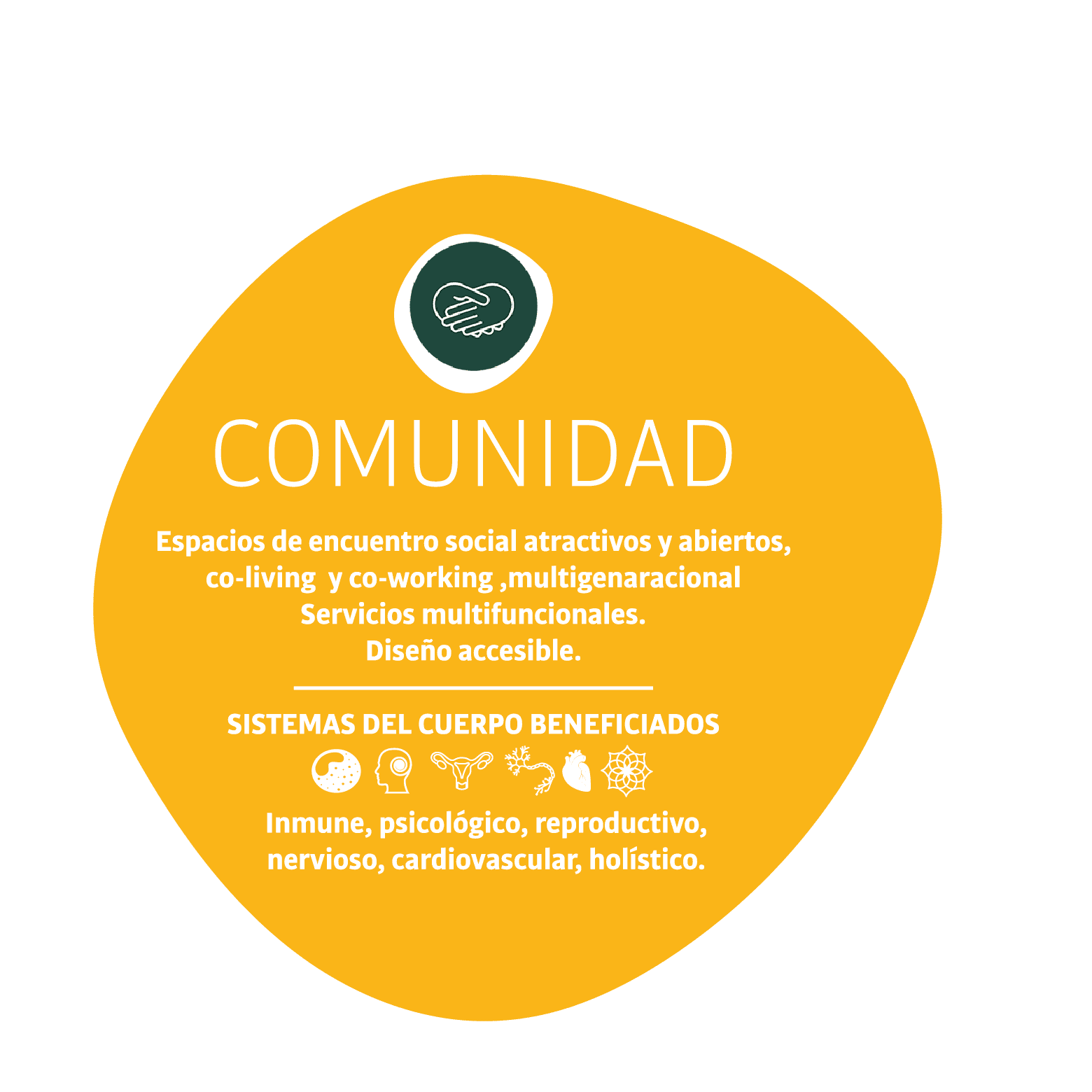It is HOUSING that places the HEALTH of PEOPLE and the PLANET at the centre of the design.
Being sustainable is no longer enough. We are in the era of the quest for ecological and human well-being, two indivisible concepts. Casas que Cuidan de Ti is a concept of holistic architecture. For this we take into account principles of Neuroarchitecture, which include cognitive and emotional issues, energy efficiency and sustainability, combining proposals related to Wellness, such as rest and a good ecological diet as some examples, without neglecting beauty and aesthetic pleasure. Promoting the physical, intellectual, emotional and spiritual well-being of the person. This well-being leads us to connect with creativity. With our concept of coliving we try to enhance the creativity and comfort of those who occupy these spaces, taking into account all these aspects, the exterior and interior design, as well as a lifestyle.
Our houses take into account these 10 pillars of well-being
The principles of Neuroarchitecture seek to create spaces that invite happiness, wellbeing, productivity and quality of life. Buildings that reduce stress and anxiety.
Nuestras casas son espacios diseñados para convivir donde mejorar las habilidades y la creatividad, para apoyar una vida orientada a un propósito. Espacios que cuidan de ti. Casas que cuidan de ti.
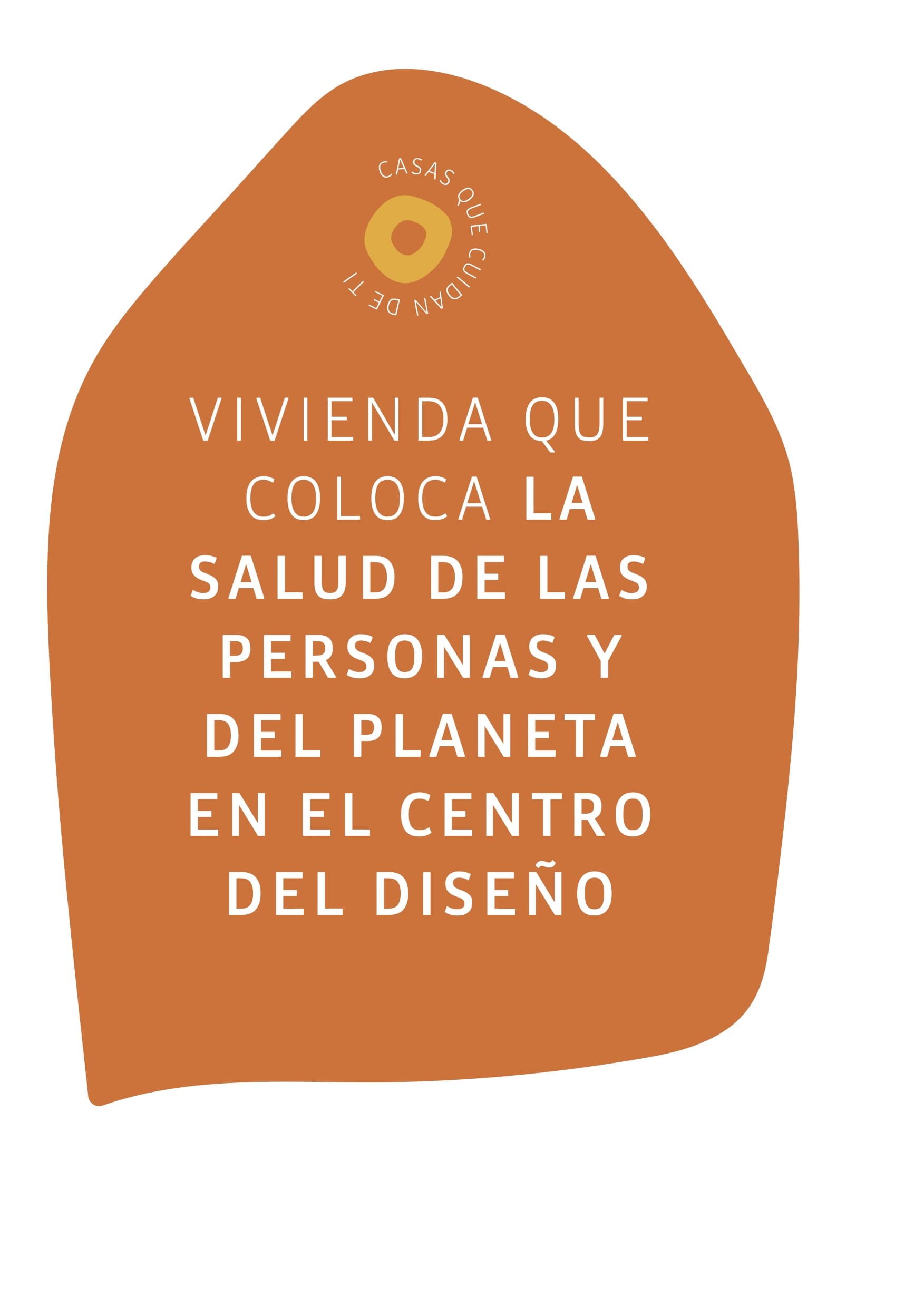
Architecture that takes care of you
Good for you, good for the environment
The house conceived as a temple, a perfect machine that is activated when the human being comes into contact with it.
It is today, in the present, when the house of the future is being delineated, when the foundations are being laid for what it will be like and how we will live in it.
Only from the awareness of our own personal well-being will we be able to work for the future of our planet.
A visionary
Sáez de Oiza designed Castellana 81 with 20th century tools and a 21st century vision, managing to create a building oriented towards human wellbeing with the WELL seal.
This is the only building in Spain recognised for its concern for human wellbeing, built in 1978 and refurbished in 2004. Well and Leed certified. Built by Sainz de Oiza and signed at the time as if it were a work of art. Buildings with value. Time has proved him right, today it is a BIC property.
Architecture affects our well-being and our creative potential. In the 1950s, Dr Jonas Salk spent time in an Italian monastery that inspired him in his polio vaccine research process. The design of these spaces and his experience in the creative process led him to partner with architect Louis Kahn to build the Salk Institute in San Diego, a research centre designed to foster creativity among researchers, an international benchmark in neuroarchitectural spaces.
Creative people are the ones who seek the most solutions to life’s problems. According to research by Radboud University in Nijmegen (Netherlands) and the University of Technology, Sydney (Australia), creativity can be considered one of the key components of the 21st century.
The creative act is the synthesis of
cognitive, affective
affective, social and imaginative components.
“Every work of art
that really moves us,
changes us”. Lawrence Harris. Artist
